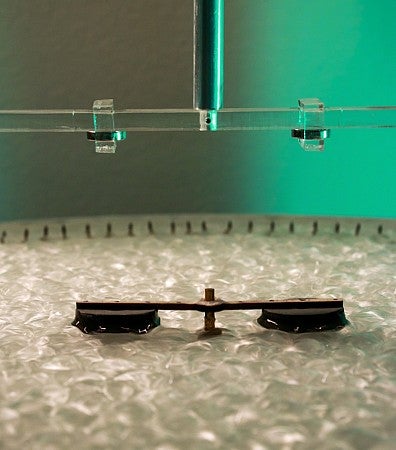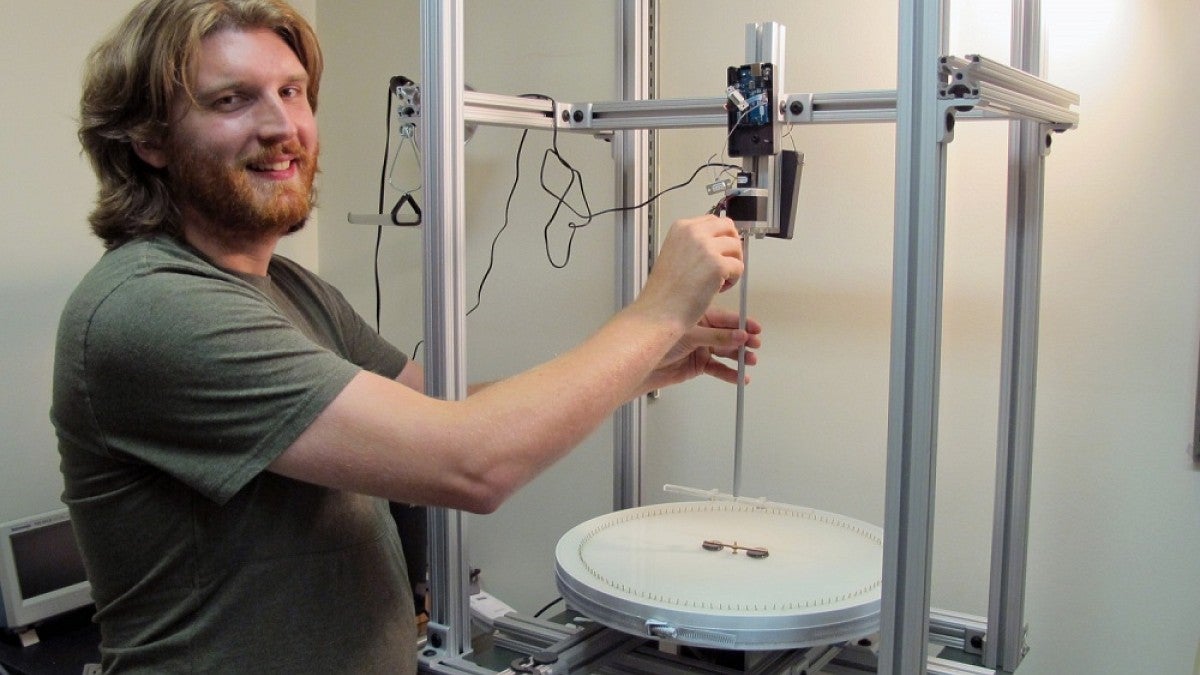Watching a pan of water as it is agitated up-and-down brings to mind ripples of waves churned by rocks plopping into a lake. In the lab of UO physicist Eric Corwin, however, it is a magic show where the water is being transformed into the same consistency as, say, wine or molasses.
Why do that? Imagine taking a fluid and making it do the work that now requires another material. But don't look for a converter to turn your tap water into blueberry syrup for pancakes anytime soon.

The research shows that the surface of water can be altered to form a two-dimensional metafluid with independent control of effective internal temperature, molecular movement and viscosity so that it takes on the quality of something else. A metafluid is a fluid engineered to have properties not found in nature.
In Corwin’s fluid, the behavior of the fluid is derived not from the microscopic properties of atoms and molecules but rather the macroscopic surface waves, called Faraday waves — named after British scientist Michael Faraday, who first described nonlinear standing waves in a paper published in 1831.
The random interactions of the surface waves on a vibrating dish of water act like a fluid containing properties that are wholly different from those of the underlying water. This metafluid provides independent control of effective internal temperature, molecular movement and viscosity, something impossible in conventional fluids.
"For us, right now, this is a very nice scientific platform for doing future experiments," said Corwin, who also is a member of the UO's Materials Science Institute. "What we might be hinting at here, for the future, is that if you can satisfy some basic criteria then you can construct a completely programmable material. We don't want to just make materials; we want to understand how to make materials do what we want them to do."
The thermal behavior of the everyday world comes from the constant, random motion of atoms and molecules. However, this same sort of constant, random motion is achievable in a macroscopic system such as the water in Corwin's experimental design.
What happens, said the paper's lead author Kyle Welch, a doctoral student in Corwin's lab, is that the Faraday waves interact and collide with one another, creating chaos as some slow down or change directions. "A test particle, floating on the surface, will experience these collisions, causing drag and diffusion properties usually only found in everyday thermal fluids," he said.
To actually make water flow like wine one would need to change the properties of individual molecules. In Welch and Corwin’s system, the researchers easily changed the properties of the surface waves, resulting in easily controllable temperature and viscosity for a secondary metafluid.
Their success in a large-scale system doesn't provide a roadmap to direct technological applications, Corwin said, but it does point toward possibilities for future research.
"Even though the waves are not molecules,” Corwin said, “all of the little waves are acting the same, as if they are in thermal equilibrium. They run around and collide with our tracer particles, causing them to diffuse. If we grab hold of the particles and try to move them, they resist that motion precisely the way that an equilibrium thermal system would."
The finding of the research, Welch said, suggests that the behavior seen in these experiments using water is perhaps universal.
"If you build a system that has the right kind of randomness you can unlock a functionality that a conventional fluid would not have," Welch said. "Material scientists have done amazing things — making alloys and mixing components together to get novel properties — but we'd like to get to a point where we can turn a knob and make a material turn into something new so that it can do something different."
Alexander Liebman-Pelaez of Reed College in Portland, who worked in Corwin's lab while participating in the UO's Research Experience for Undergraduates program sponsored by the Materials Science Institute and National Science Foundation in summer 2015, was a co-author on the paper.
The NSF supported the research through a career award to Corwin.
—By Jim Barlow, University Communications


